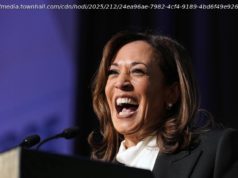Views expressed in this article are the opinions of the author and do not necessarily reflect the views of The Epoch Times.
As attention focuses on Iran and the sanctions President Donald Trump has put back in place, it’s worth revisiting events leading to the Joint Comprehensive Plan of Action (JCPOA) —known as the Iranian Nuclear Deal.
On Feb. 9,2010, Iran began the crucial step of producing 20 percent enriched uranium. In response, the UN Security Council adopted Resolution 1929 on June 9,2010, expanding sanctions against Iran.
On June 24,2010, Congress tightened sanctions on firms investing in Iran’s energy sector and imposed new sanctions for selling refined petroleum to Iran. The EU followed suit on July 26,2010.
On May 8,2011, Iran’s Bushehr nuclear power plant began operations and achieved a sustained chain reaction. On June 8,2011, Iran announced intentions to triple the rate of 20 percent enriched uranium production.
On Dec. 31,2011, Congress passed legislation to sanction foreign banks if they processed transactions with Iran’s Central Bank. On Jan. 23,2012, the EU imposed a phased ban on oil purchases from Iran.
On Feb. 15,2012, Iran announced a number of advances, including new centrifuges allowing for faster uranium enrichment.
Negotiating tactics aside, economic sanctions were proving effective.
Iran’s GDP contracted by 6.6 percent in 2012. The official unemployment rate jumped to 14 percent. Iran’s economy was later estimated to be 15-20 percent smaller due to sanctions—which cost Iran an estimated $160 billion between 2012-2015.
In response, Iran’s currency collapsed, losing 80 percent of its value in the first ten months of 2012. On Oct. 1,2012, the rial dropped by 15 percent.
The rial’s fall caused inflation to spike from an already uncomfortable 20.6 percent in 2011 to 27.4 percent in 2012. Inflation in Iran would peak at 39.3 percent in 2013.
As Iran’s economy was failing, the sanctions were preventing Iran from taking the last steps to becoming a nuclear weapons state.
On Aug. 30,2012, the IAEA reported that Iran was building stockpiles of 20 percent enriched uranium. The step from 20 percent enriched uranium to weapons-grade uranium is surprisingly small.
Foreign Policy wrote in January 2012, “If Iran decides to produce weapons-grade uranium from 20 percent enriched uranium, it has already technically undertaken 90 percent of the enrichment effort required. Using 20 percent enriched uranium as a feed, 250 kg UF6 can be turned to weapons-grade material in a month’s time.”
By late 2012 Iran had produced enough 20 percent enriched uranium to produce weapons grade uranium. Iran’s problem was the lack of a delivery system, as outlined in a 2012 Congressional Report:
“It is increasingly uncertain whether Iran will be able to achieve ICBM capability by 2015 for several reasons:
Sanctions significantly impaired Iran’s ballistic missile program. Medium-range ballistic missile production was severely limited. ICBM’s were simply not attainable.
On June 14,2013, Hassan Rouhani, a former nuclear negotiator, was elected president of Iran. Rouhani immediately called for negotiations.
On Sept. 27,2013, Obama called Rouhani—the highest level contact between the United States and Iran since 1979. Talks began in October 2013. On Nov. 23,2013, Obama announced the first round of sanctions relief, even while Congress was pushing for further sanction tightening. Obama’s announcement was material— $3 billion in cash plus another $16-17 billion in sanctions relief, boosting Iran’s foreign exchange reserves by 25 percent.
This translated into a flood of Trade Delegations visiting Iran—ten in the first two weeks of 2014. Iran’s economy began to recover immediately. GDP grew 3 percent in 2014. Inflation fell from 39 percent to 17 percent. As the Iranian economy grew so did Iran’s negotiating power.
On July 14,2015, the Joint Comprehensive Plan of Action was reached. The JCPOA lifted all economic sanctions and gave Iran access to $120 billion in reserves held abroad. It also contained Sunset Clauses.
According to a 2015 report from the Foundation for Defense of Democracies, “The sunset clauses—the fatal flaw of the JCPOA—permit critical nuclear, arms, and ballistic missile restrictions to disappear over a five-to-15-year period. Tehran must simply abide by the agreement to emerge as a threshold nuclear power with an industrial-size enrichment program.”
The JCPOA stipulated that, “For eight years the ballistic missile restrictions will remain in place.”
Page 99 of the document contains defining language, which states “Iran is called upon not to undertake any activity related to ballistic missiles designed to be capable of delivering nuclear weapons.”
Note the crucial differences with the original language contained within Resolution 1929, which said “Iran shall not undertake any activity related to ballistic missiles capable of delivering nuclear weapons.”
Iran has bolstered its ballistic missile capabilities, achieving up to 23 launches and masking ICBM development through its Space Launch Program.
On Aug. 22,2017, Iran’s atomic chief shocked the International Community by declaring that Iran needs only five days to ramp uranium enrichment back up to 20 percent.
Recall the situation in 2012:
The JCPOA effectively solved Iran’s problems:
The New York Times summed things perfectly in July 2015, stating “Mr. Kerry described an Iranian capability that had been neutralized; the Iranians described a nuclear capability that had been preserved.”
On May 8,2018, President Trump withdrew from the JCPOA. Sanctions on Iran are being re-imposed. The first round of sanctions became effective on Aug. 6,2018. A second round of sanctions begins on Nov. 4,2018:
The rial began to fall in late 2017. Following U. S. withdrawal from the JCPOA, the rial collapsed. Official rates are meaningless and black market transactions must be used. According to Steve Hanke, a Professor of Applied Economics at Johns Hopkins University, Iran’s implied annual inflation rate was 186 percent on Aug.






